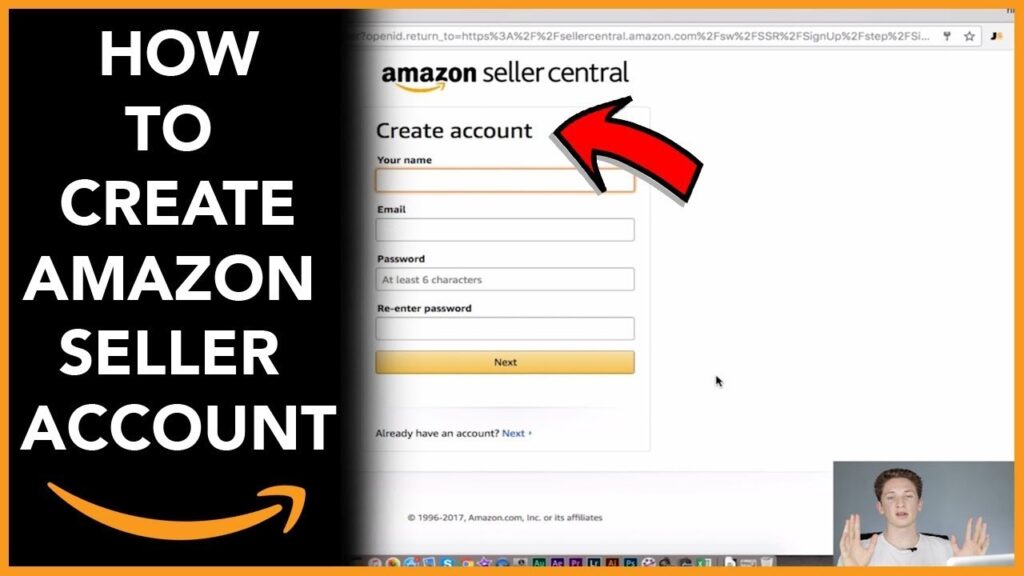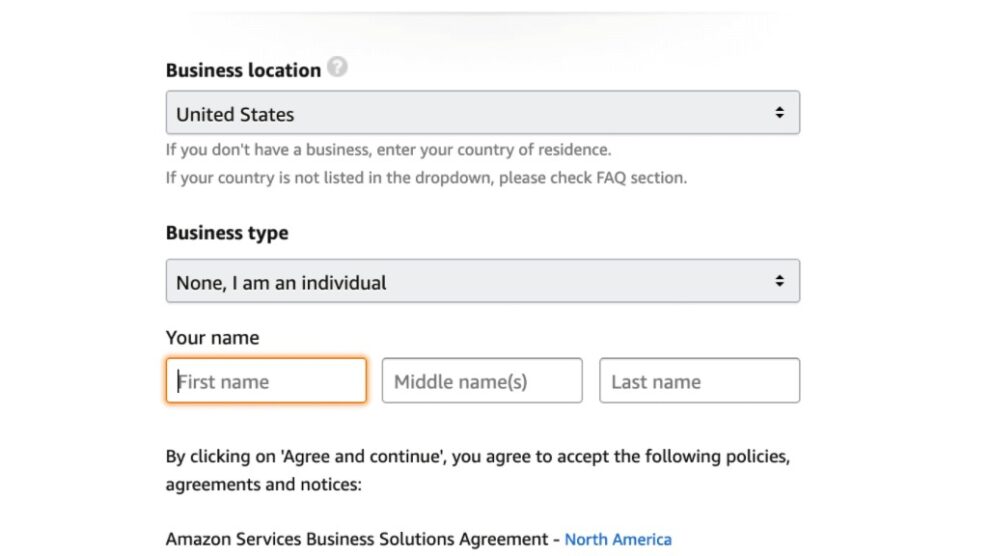Creating an Amazon seller account can help you expand your business and connect with millions of potential customers. Regardless of your level of experience as an entrepreneur, Amazon provides a strong platform for you to sell your goods. We’ll walk you through the entire process of creating an Amazon seller account in this article.
Advantages of Selling on Amazon
Allow us to examine some of the main advantages of selling on Amazon before we get started with the account registration process:
-
- Access to a vast global consumer base with millions of active shoppersUse Amazon’s reputable name and trusted brand to increase your credibility
Make use of Amazon’s robust fulfillment network (Fulfillment by Amazon) to optimize your business processes
Take use of Amazon’s marketing resources and advertising options.Possibility of substantial sales volume and quick company expansion
Selecting the Appropriate Amazon Seller Plan
Individual and Professional are the two primary seller plans that Amazon offers. The principal variations are:
-
- ~li>
Personal Strategy:
- Ideal for vendors that have fewer than 40 monthly sales. Together with variable closing costs and referral fees, you pay a $0.99 fee for each item sold.
- Professional Schedule: Perfect for vendors that handle over 40 sales a month. In addition to variable closing fees and referral fees, you pay a $39.99 monthly subscription charge. Additional perks of this plan include placement eligibility for Buy Boxes and access to sophisticated selling tools.

A Comprehensive Guide: How to Register as an Amazon Vendor
Go to the Amazon Seller Central website as the first step.
Visit the Amazon Seller Central website and click the “Sign up” button to start the account setup procedure.
Step 2: Supply Your Company Details
Enter your company’s information, such as your address, phone number, and legal business name. You will also be required to submit details regarding the nature of your business (individual, corporation, LLC, etc.) and the desired mode of payment deposit.
Step 3: Identity Verification
Sellers must provide identification verification to Amazon in order to comply with anti-money laundering requirements. A valid government-issued identification document (like a passport or driver’s license) and documentation of your address (such a utility bill or bank statement) are required.
Selecting Your Seller Plan is the Fourth Step.
Depending on your company’s demands and projected sales volume, choose between the Individual and Professional seller plans.
Step 5: Provide Information Regarding Taxes
You could be required to supply tax information, including a tax ID number or VAT registration number, depending on your area and business structure.
Step 6: Include Your Items and Commence Sales
You can begin adding your products to the Amazon catalog as soon as your account is created. Provide comprehensive product details, pictures, and costs. You can now begin selling after selecting your fulfillment option (self-fulfillment or fulfillment by Amazon).
Commonly Asked Questions Regarding Becoming an Amazon Seller Member
Is there a cost to register as an Amazon seller?
Opening an Amazon seller account does not need payment up ahead. Nevertheless, the costs you pay will depend on the products you sell and the seller plan you select (Individual or Professional).
Can I sell goods on Amazon in any category?
While certain product categories are available to all sellers, others need Amazon’s permission before products can be listed. Before adding your products, make sure you read Amazon’s category requirements and limits.
How do I get compensated on Amazon for sales?
Sellers receive payments from Amazon on a regular basis, usually every 14 days. Direct deposits of payments are made into the bank account you have specified. The Seller Central dashboard allows you to adjust your account settings and see your payment history.
Result
The procedure of creating an Amazon seller account is simple and can lead to a lot of business prospects. You may set up your Amazon seller account and begin reaching millions of potential customers by carefully evaluating your business objectives and goals, as well as by following the step-by-step guide mentioned above. To thrive on the platform, keep in mind to give correct information, abide by Amazon’s rules and regulations, and concentrate on providing premium goods and first-rate customer support.










Add Comment